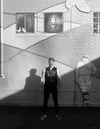Inside the structure
The observed system reacts
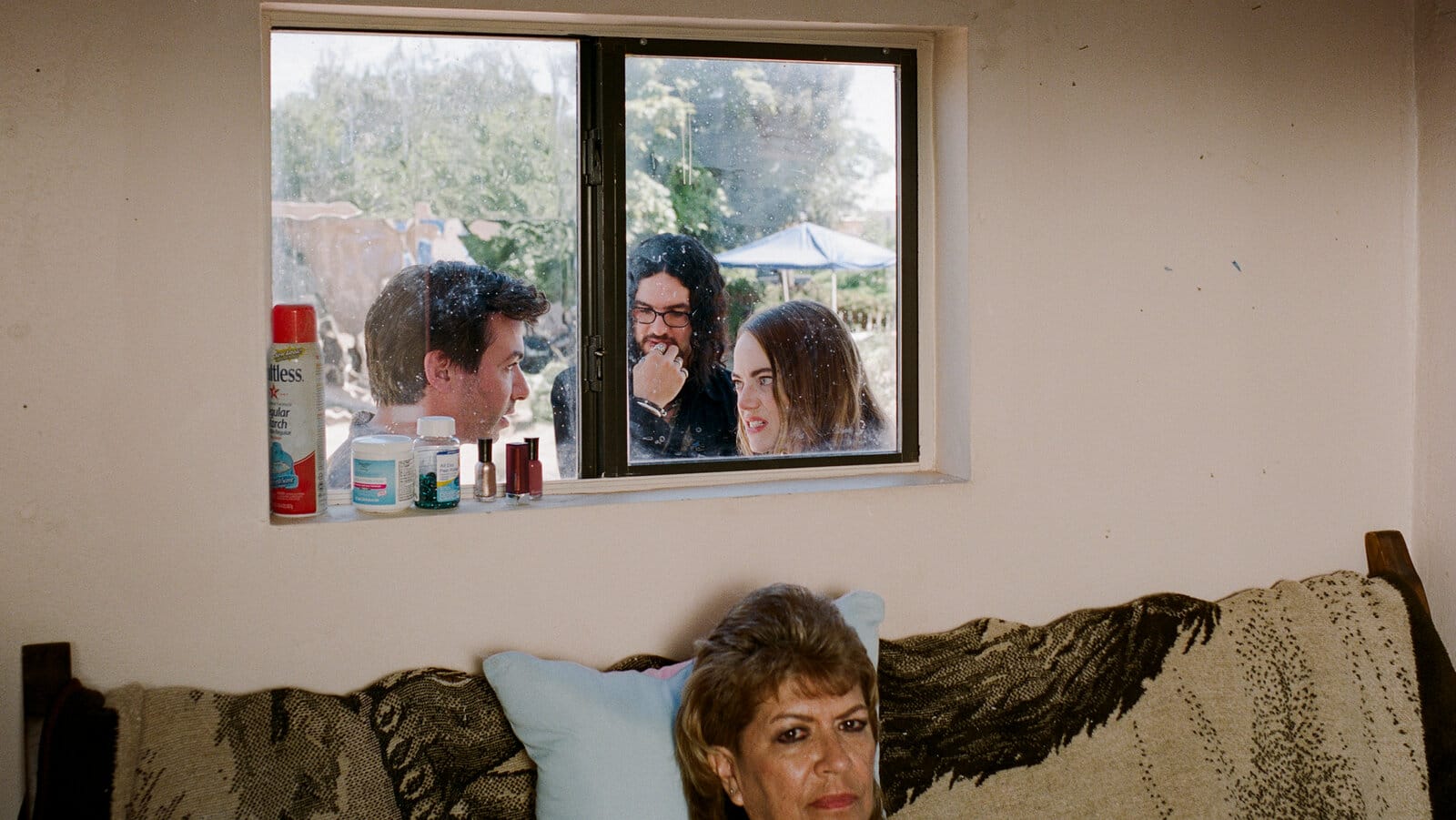
For today's main feature Sean T. Collins returns to write about the "surveillance cinema" of The Curse, The Zone of Interest, Skinamarink and more.
"Surveillance cinema subjects its characters to observation so ostentatious we feel it like a physical presence, like an entity; the observed system reacts in similarly extreme fashion, with the shattering of reality itself."
Collins recently wrote for Hell World about Godzilla Minus One.

"Yamazki’s film is the best and worst of humanity refracted through a radioactive green lens. It’s uranium glass. It makes you feel the colossal weight of the crimes committed by both sides in World War II, embodies them in the form of Godzilla, and unleashes it on people who do not deserve to suffer and die. What more could you possibly ask from a horror movie?"
On Thursday Joe Biden was asked whether American strikes on Yemen were working.
“When you say working, are they stopping the Houthis?" he answered.
"No."
"Are they going to continue? Yes.”
A pastor in Bryan, Ohio pleaded not guilty last week to 18 city zoning law violations. Chris Avell was arraigned by police for the crime of allowing unhoused people to shelter in his church overnight after a nearby shelter had become too crowded.
"According to the city, Avell was sent a letter on Nov. 3 informing him the homeless were prohibited from sleeping at the church overnight," the Milwaukee Journal Sentinel reported. "Avell ignored the letter, and during a New Year’s Eve service, police arrived and issued violations."
“Many of these people have been rejected by their families and cast aside by their communities. So, if the church isn’t willing to lay down its life for them, then who will? This is what we’re called to do,” he said in an interview.
The temperature in Bryan tonight is forecast to go down to 1°.
A poultry processing plant in Mississippi has been cited by OSHA for improper safety standards that resulted in the death of a 16 year old migrant from Guatemala named Duvan Perez. Perez – the second person to die in the Mar-Jac facility in Hattiesburg in the past two years – was sterilizing the deboning area when he was pulled into the gears of a machine and crushed.
The government agency has proposed a $212,646 fine.
"Following Perez's death, Mar-Jac Poultry denied knowing Perez was a minor until after the incident," USA Today reported. "The company said it contracts with staffing companies to fill positions at its facilities, an agreement that requires those third parties to verify job applicants are legally qualified to work."
For more on how this sort of staffing set up often works in factories around the country you may go back to this Hell World from 2022 about a man who was crushed to death in a Bacardi bottling plant in Jacksonville.

It’s a very lucrative field to be in right now this not-really-hiring people industry. And this being America it’s naturally largely unregulated.
Antonia related circumstances in the warehouse that will sound familiar to anyone who’s worked a temporary job of any kind: Being put into more dangerous positions with less safety training for starters. Lower wages and less opportunity for advancement and no paid time off and no sick leave and no benefits as well. As disposable as the average direct hire hourly wage worker in America is already a temporary worker exists on a level somehow below that. Oftentimes that’s while working for massive brands we all know and use but without even the acknowledgement that they even officially work there by the corporation in question if something goes wrong. Corporations avail themselves of distancing tactics in all sorts of ways to insulate themselves but nowhere is it more blatantly foul than when they get to pretend the people who make their products are just some guy they don’t know anything about. Him? We don’t know him. Go ask the other guy.
The Not My Problem gambit works in many and mysterious ways under capitalism.
In shocking news a report from the Groundwork Collaborative think tank has found “resounding evidence that high corporate profits are a main driver of ongoing inflation, and companies continue to keep prices high even as their inflationary costs drop," according to The Guardian.
Corporate profits "accounted for about 53% of inflation during last year’s second and third quarters. Profits drove just 11% of price growth in the 40 years prior to the pandemic," they found. Meanwhile "prices for consumers rose by 3.4% over the past year, but input costs for producers increased by just 1%."
Wow!
Congratulations are in order to the progressive state of Israel for their recent victories for feminism and inclusion.
"After a long struggle for acceptance, Israel’s female combat soldiers are pushing new boundaries after rushing into battle on Oct. 7," the New York Times explains today.
In the months since, the needs of the military has propelled societal change at breakneck speed. Same-sex partners of slain soldiers are now legally recognized widows and widowers, and at least one transgender soldier has fought on the front in Gaza.
Despite years of derision from conservative quarters of Israeli society, female combat soldiers have become symbols of progress and equality, appearing on magazine covers and featured in television news profiles.
A recent survey by the Israel Democracy Institute found that among the secular public, about 70 percent of women and 67 percent of men indicated support for increasing the number of women in combat roles.

Shortly after Israel’s bombardment of the Gaza Strip began in October, global health groups raised alarms that there was no longer anywhere safe for pregnant women to give birth. More than three months into the siege, conditions have only worsened, and pregnant and menstruating people are especially at risk. Health care workers report a 300% increase in the miscarriage rate among pregnant people in Gaza since Israel’s attacks began three months ago, Nour Beydoun, CARE’s regional advisor on protection and gender in emergencies, told Jezebel.
The lack of supplies due to Israel’s ongoing blockade has resulted in pregnant women struggling to carry healthy pregnancies; higher risk of infection and death after giving birth or having c-sections; increased infant mortality; and a range of other deadly sexual and reproductive health outcomes. Beydoun told Jezebel that CARE has heard about “significant weight loss” among pregnant women “due to the limited access to food, to proper nutrition,” resulting in “poor personal health and also in poor fetal and newborn health.”
Congrats to this guy too. Having the time of his life.
"Guys, we're bombing Gaza... hahaha...right now! I'm trying to eat my popsicle"
— Muhammad Shehada (@muhammadshehad2) January 17, 2024
What explains this Israeli influencer's extreme delight, excitement & ecstasy about the slaughter of civilians & wiping out of a whole city?
PS. Israel's president just met & honoured this same guy! pic.twitter.com/rcBxSh8bJX
Elsewhere Arizona State University has announced a partnership with OpenAI and its ChatGPT product Axios reports. "The partnership will focus on increasing student success, finding new avenues for research and streamlining processes," a press release from the school said.
I love streamlining processes so much.
ASU chief information officer Lev Gonick said they plan "to use ChatGPT to build personalized AI tutors and offer writing help to students in one of its largest classes, Freshman Composition."
I sent this new short story by me out to paid subscribers a couple weeks ago but I'm opening it up for a bit for free readers as well. It's about love and addiction and oxytocin and ice cream trucks and landlords and lava.
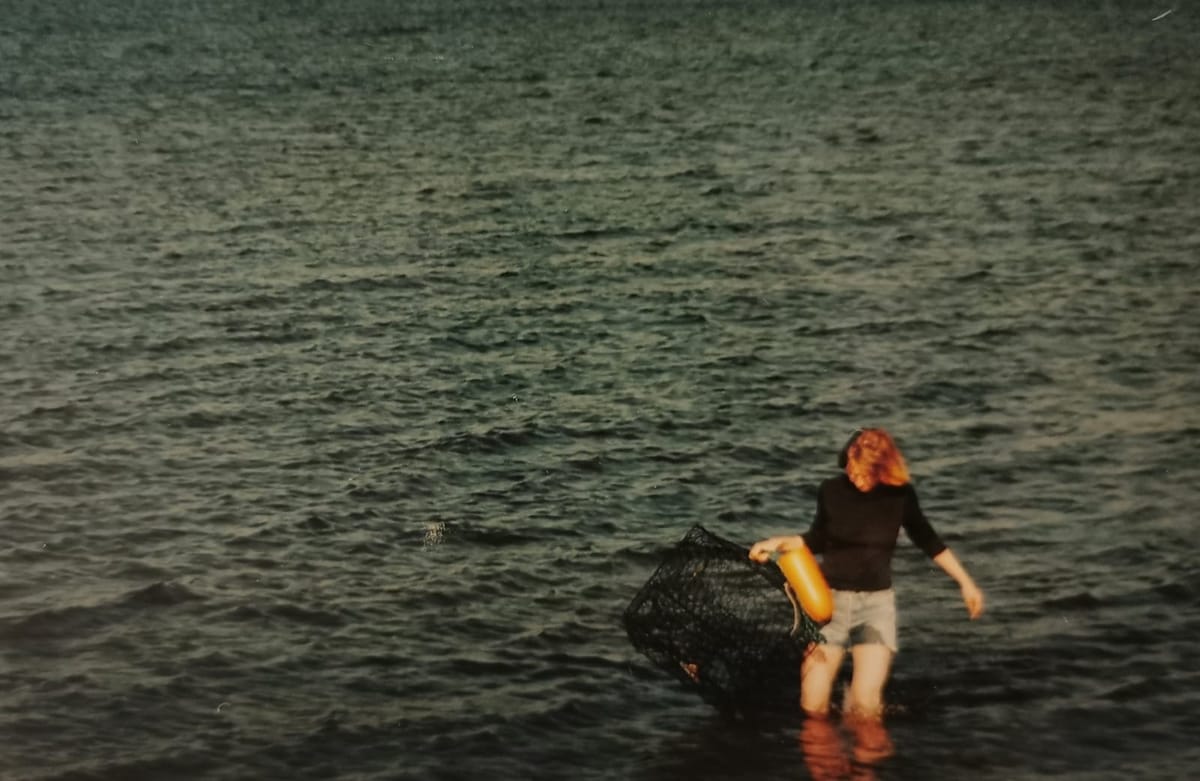
It’s just a pair bonding thing she said. Like a habit kind of thing she said. There’s a hormone called oxytocin she said and I said do you mean oxycontin which in retrospect I should not have said.
I figured at the very least I could probably come to some kind of epiphany here. Gain some sort of awareness of who I was as a person. Learn from all of this and do better on the next iteration.
I wasn’t going to do any of that.
I knew that I could if I had wanted to though. The door toward that path had been opened for me.
Then again there was always the chasm to fall into. The beckoning chasm.
Please consider helping your old pal Luke out with a paid subscription if you want to read everything fresh off the tap. Here's a coupon for 35% off that will remain up until tomorrow. What a deal!
I'm very sorry to hear the news about Pitchfork. Conde Nast has announced the beloved/hated music site is being merged with the GQ brand – which just makes sense! – and a number of layoffs have already come down.
“Both Pitchfork and GQ have unique and valuable ways that they approach music journalism, and we are excited for the new possibilities together," Anna Wintour said.
one absolutely bizarro detail from this week is that Anna Wintour—seated indoors at a conference table—did not remove her sunglasses while she was telling us that we were about to get canned. the indecency we’ve seen from upper management this week is appalling.
— Allison Hussey (@allisonhussey) January 19, 2024
I only wrote for Pitchfork a couple times but this sums up my whole deal pretty accurately:

The writing has been on the wall for well over a decade now as regards music critic as a viable career. Otherwise that might still be my main gig if I didn't see the way things were headed. I might write more about this soon but goddamnit we are poorer as a people and as a culture with the loss or degradation of the few remaining outlets for arts criticism.
I'm reminded of this piece Mirana Reinert wrote about the sale of BandCamp back in October:

It can work. At least until the companies with dubious interest in “music culture” decide it’s not enough to just sustain. The line must go up infinitely. Beloved websites are destroyed by money hungry ghouls everyday. The websites I spent years of my life reading as a teenager desperate to read about music and culture — The AV Club, Gawker, Noisey— existed as hollowed out versions of themselves to different degrees long after they became depressing to look at. Whether it comes down to an SEO click farm, a shell of former infamy without understanding what made it successful, or a slow fade out of anything published at all— they all end up looking the same. They’re graveyards of broken and unreadable articles that changed my life.
And this talk I had with David Roth recently about the state of the media.
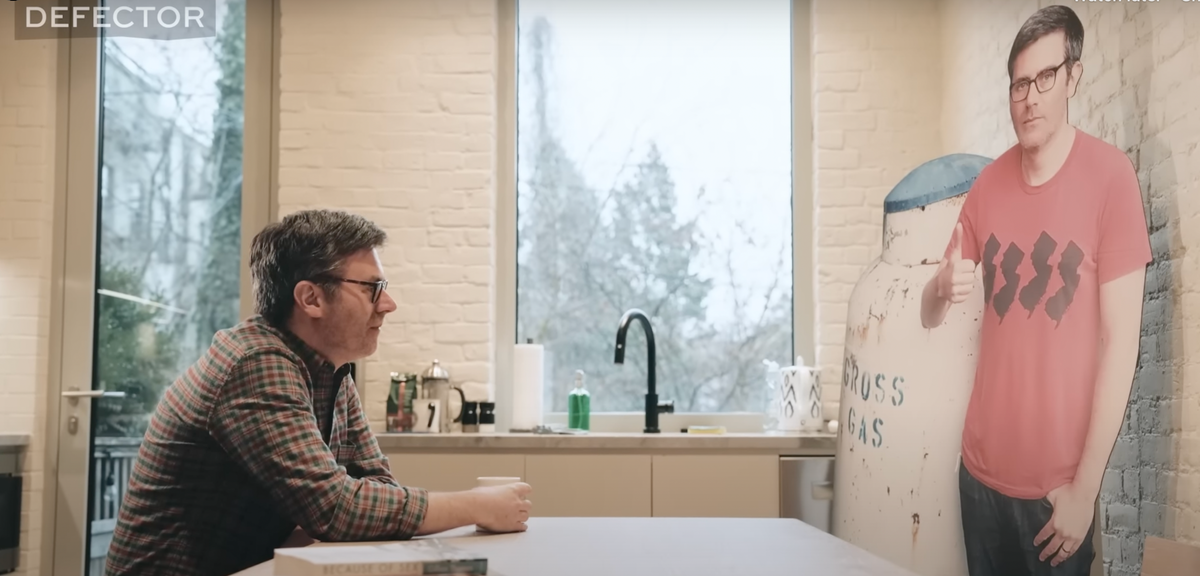
They fired everybody. Popular Science has been around like 150 years. Jezebel has been around like fifteen years. When you buy sites like that, with an archive of old stories that people are gonna find and that show up in search results, and in many cases are very good and very useful, that in itself is worth something. You'll make money just having that. They're not gonna make a ton of money, but you're not spending any new money on it either. Why would you destroy the value that's latent in that, just so that you can ride a website all the way down into the ground? Until it is completely indistinguishable from the shit that we were talking about where it's “Calista Flockhart today will depress you”? Every website has to be that? Just because it's cheaper to do?
Speaking of Roth and the collapse of the traditional cultural journalism model the new writer-owned co-op project Flaming Hydra that he and I and a couple dozen other amazing writers are working on is going to launch at the end of the month.
Seriously look at this lineup:

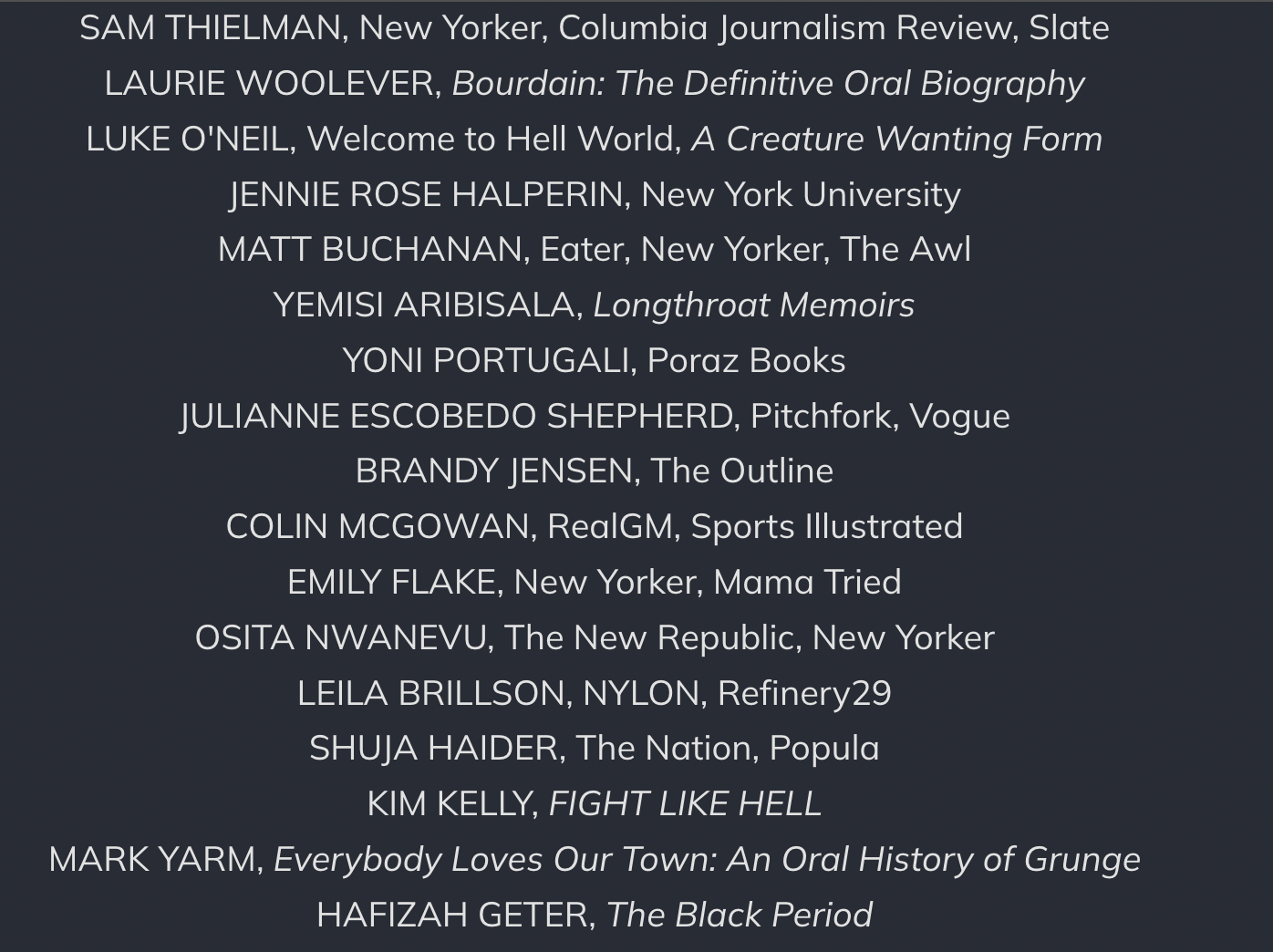
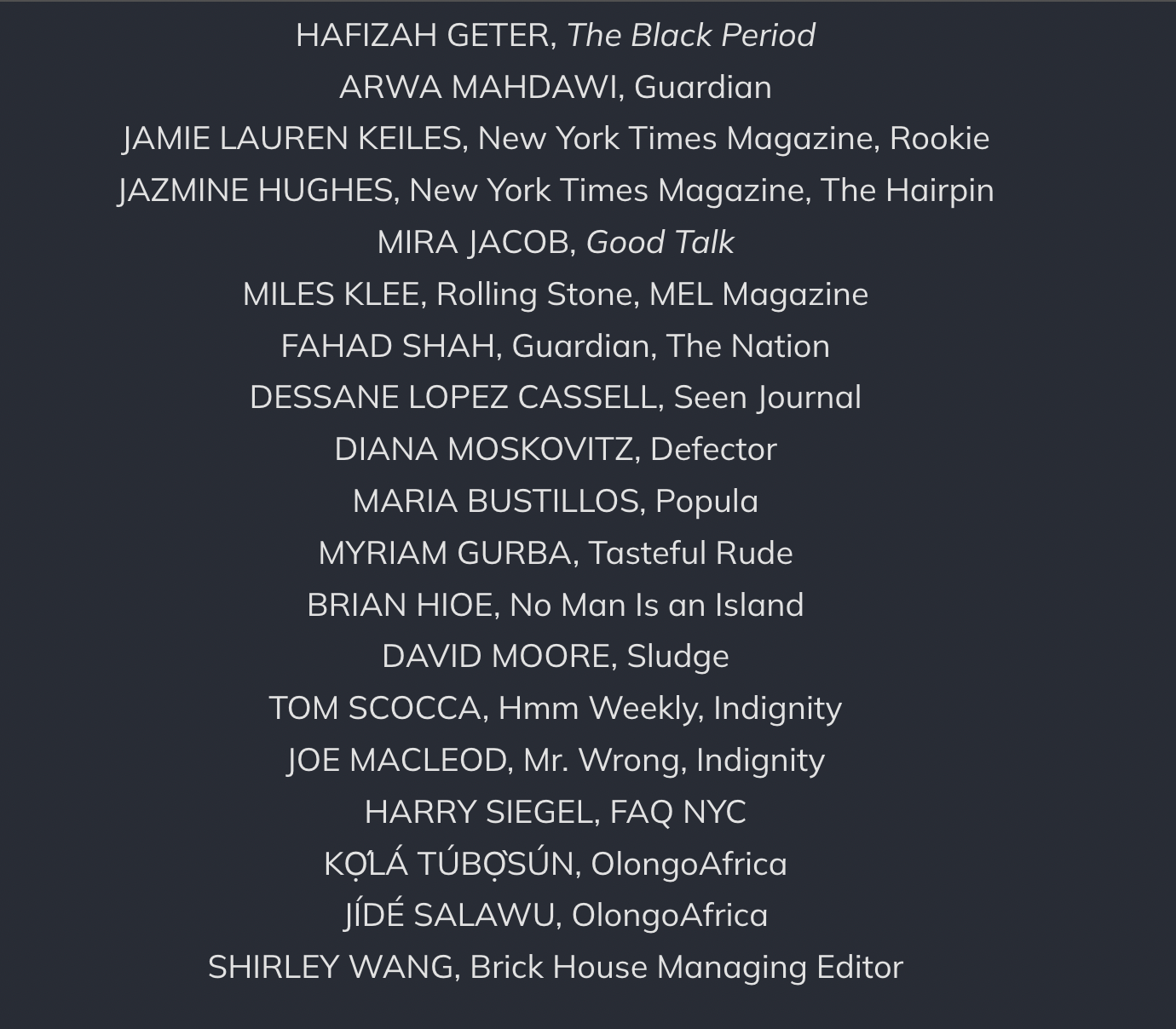
Anyway subscribe to that if you want. We're gonna save the world. No way it could go wrong.
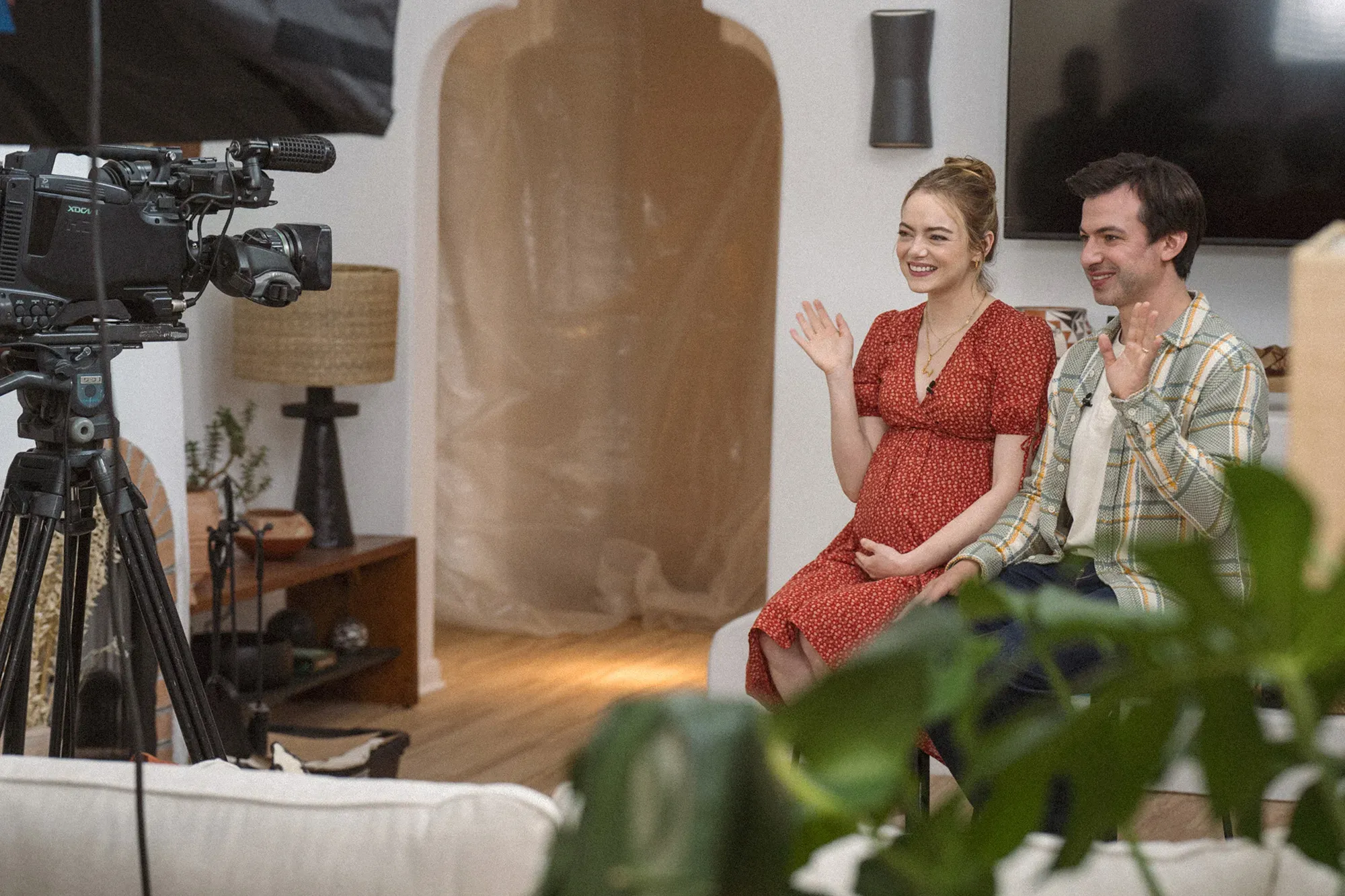
We ask that you refrain from talking about your experience inside the structure
by Sean T. Collins
Whitney and Asher Siegel are being watched. By the crew of their reality show, Flipanthropy. (Excuse me, Green Queen.) By the home audience of that show, now nearing production on its second season. By us, the viewers of The Curse, the Nathan Fielder/Benny Safdie drama in which Whit (Emma Stone) and Ash (Fielder) are the main characters and the creation of the reality show is the central story. But they’re also being watched by something else.
Camera placement and movement in film and television tends to have an easily understandable point. Most frequently the camera is made to feel invisible to heighten the illusion of immersion in the events on screen, and you’re not meant to notice it. At key moments it communicates the emotions of the characters, or the desired emotions of the viewer, by being shaky or stately or swoony or what have you. Filmmakers play up different techniques depending on their personal preference and style, but in general they adhere to a grammar, a shared set of consistent rules and techniques people understand, to achieve these effects.
The cameras in The Curse do not do that. Fielder and the show’s other directors imbue their camera with a sort of (sorry) artificial intelligence. The unusually high, low, distant, and/or obstructed angles – through windows, around corners, across parking lots, partially blocked by walls or half-closed doors – from which we view the characters suggest not the canned immediacy of a reality show, but the purposeful voyeurism of professional surveillance.
You might have noticed a shot through a peephole in the first episode, which appears at first to be the work of director Dougie (Safdie) and his reality TV crew until they become visible in the shot themselves. The subsequent episode ends with supporting character Fernando (Christopher D. Calderon) looking directly into a camera, as if he’s accidentally spotted it. And it’s hard to miss the bit later in the season where Whitney is followed to work with a POV shot from the perspective of an unknown driver, whose hands we can see on the wheel of the car as he drives behind her.
While I’m sure you’re meant to wonder hey, what’s up with that, I doubt Safdie and Fielder intended those shots to be some kind of Lost-style puzzle to be solved. Certainly there’s no mystery cameraman hidden inside their ghastly, mirror-coated “passive home” with them. Yet the uncomfortably cramped security-cam shots within the Siegel home tell practically the entire story of their relationship, up to and including its ultimate dissolution. That dissolution occurs when the home itself turns on them by somehow reversing Asher’s gravitational field, pinning him to the ceiling and eventually flinging him into the sky to die, a falling-up nightmare made real.
Again, taking this literally misses the point. The malevolence of the system that enabled the Siegels to gentrify a neighborhood of impoverished Native and Black people with their lifeless homes, using seed money gained from slumlords and a career exploiting gambling addicts, and kept alive by doubly exploiting all the locals in their reality show — that malevolence already erupted into the reality of the show, long before it tore Asher from the world.
The Siegel house, intended to evoke comfort, safety, and the capital-G Good life due to its fancy pants and ultimately pointless “passive house” environmental certification, is where you feel that malevolence the strongest. The place the Siegels themselves designed to make them feel their safest and best is where they are most keenly and cruelly observed by the camera, and where they are, in the end, most harshly punished by whatever force exists to do so in their world. The family home is central to the middle-class dream; it is just as central to the nightmare of surveillance cinema.
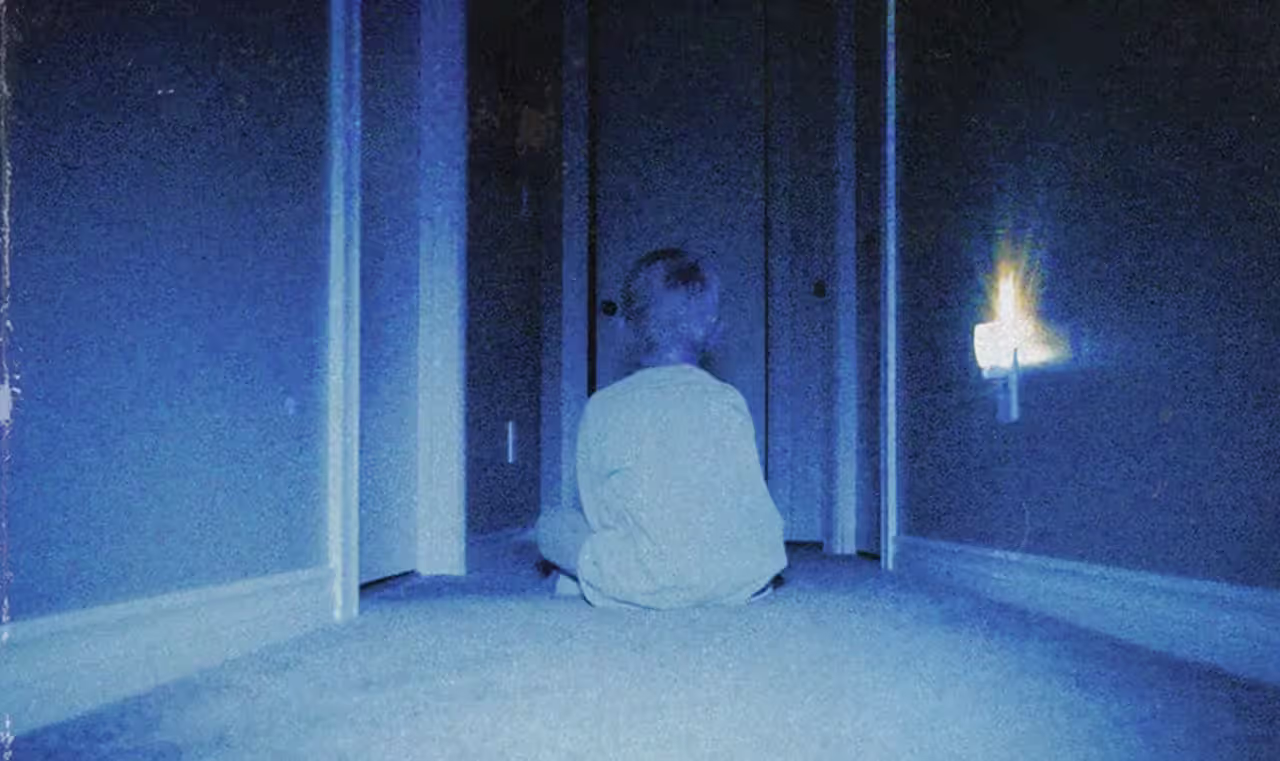
A horror-adjacent microgenre, surveillance cinema just had a boom year. Before wrapping up with The Curse, 2023 began with the official release of Kyle Edward Ball’s experimental (but don’t let that put you off, it’s straight-up terrifying) horror film Skinamarink. In Wikipedia summary terms it’s the straightforward story of two little kids (Lucas Paul and Dali Rose Tetreault) trapped in their suburban Canadian home by some kind of malevolent entity. In visceral terms it’s like watching a snuff film recorded by actual demons whose night eyes see colors we can’t.
Primordially murky, off-center shots of shadowy corners, cavernous hallways, isolated household objects, a television set endlessly playing old cartoons, and the occasional terrified child create the sense of a house turned on itself. The wall-to-wall carpeting, the toys, and the VCR provide no more safety for the kids now than they did when their parents were going through their divorce, heavily implied to have led to conditions of emotional and physical neglect. Why shouldn’t the home be a site where the children are surveilled and tormented then? Like the subjects of some terrible experiment?
That such treatment of living human beings has in fact taken place in the real world on a fully industrial scale is the central horror of The Zone of Interest, Jonathan Glazer’s punishing, astonishing depiction of Auschwitz via the literal house next door. That house is occupied by camp commandant Rudolph Höss (Christian Friedel), his wife Hedwig (Sandra Hüller), and their gaggle of giggling children; its garden is fertilized with human remains and the giggles float above a backdrop of gunshots, screams, and the endless nocturnal rolling of trains.
The architecture of the Höss homestead (homestead is the right word; they very consciously model their lives after American “pioneers” from whom their master took direct inspiration for his war plans) does much of Glazer’s work for him. The walls and guard towers designed to keep the prisoners in loom all around them as they relax and frolic, conveying the idea that the Höss family is trapped within the prison of their own fascist moral degeneracy. With that backdrop in place, Glazer’s surveillance-cinema cameras, literally set up to run indefinitely and allow the actors to inhabit their roles as well as the home, cast an eye on the Höss home so harsh and revealing that Glazer himself compared it to the long-running surveillance-style reality TV show Big Brother. (I don’t think this was intended to be a compliment to Big Brother.) The cameras are the judge and the jury for the crime they’re capturing.
But absent the world-historical atrocity taking place on the other side of the wall, we recognize Rudolph and Hedwig as familiar types. They’re suburban careerist dullards with no discernible personalities beyond grasping ambition and amorphous but psychotically fervent racist patriotism. I do not mean to minimize their uniquely monstrous crimes by saying they are motivated by the same mindset as your average tradwife TikTok influencer or guy with We The People in Constitution font on the back of his killdozer pickup (look I know it’s a cliché but try driving on Long Island sometime). The lederhosen in which they dress their kids are just their culture’s Thin Blue Line t-shirts in children’s sizes. These are Normal People, by their definition of normal, and by many other people’s too. This, then is what being normal is worth. Here’s your happy home.

But I felt like I’d seen this family, this home, this story before in another way, years before. Prescient in the eerie way many of the Infomercials were, This House Has People in It paved the way for surveillance cinema aesthetics. This House was created by AB Video Solutions, an offshoot of Baltimore’s Wham City collective also responsible for the stone-cold suburban-horror mental-illness masterpiece Unedited Footage of a Bear. (AB Video also had AI’s number a decade in advance.)
In this early take on surveillance cinema, director Alan Resnick doesn’t hide the “surveillance” part of the equation. On-screen text clearly indicates that the short film, which tracks a blended suburban family on the day of their son’s birthday as events in and surrounding the house steadily deteriorate into outright madness, has been assembled from a faux security-camera database. It still has one foot in the found-footage horror subgenre jump-started by The Blair Witch Project, in other words; Paranormal Activity, with its stationary cameras intended to observe the living and dead inhabitants of a house whenever they’re in frame, was a more recent and obvious comparison
If surveillance cinema has precursors I’d argue they’re less [REC] or Clerks and more individual moments in films like Michelangelo Antonioni’s L’Avventura or Martin Scorsese’s Taxi Driver, in which apparently sourceless camera movements — “walking” through the alley in the abandoned village even after our heroes have left, slowly panning away from Travis Bickle on the phone with Betsy as if unable to record something so excruciating — give you skin-crawling feeling that the camera-observer is prying into these events for reasons of its own.
But the labeling on the This House footage raises more questions than it answers. What is the purpose of the recordings? What kind of security firm would film every square inch of a family’s home indefinitely? Did the behavior and phenomena they recorded disturb them? Who paid them? Who was the audience? There are no more answers here than there are in The Curse as to who was looking through that peephole. (Or in L’Avventura and Taxi Driver as who was watching Monica Vitti and Robert De Niro.)
Found-footage roots aside, This House is so forward-thinking that the phrase “This Höss Has People in It” can serve as a succinct summary of The Zone of Interest. The static angles of wall and ceiling-mounted cameras show us mundane details, abstracted objects, and abject horrors with the same dull, distant, dispassionate gaze. The normalcy of suburbia crumbles in the face of this family’s deep denial — its failure to achieve meaningful happiness despite maintaining all its superficial trappings, and its subsequent failure to come to terms with that failure. The camera shows us what they don’t want to see themselves.
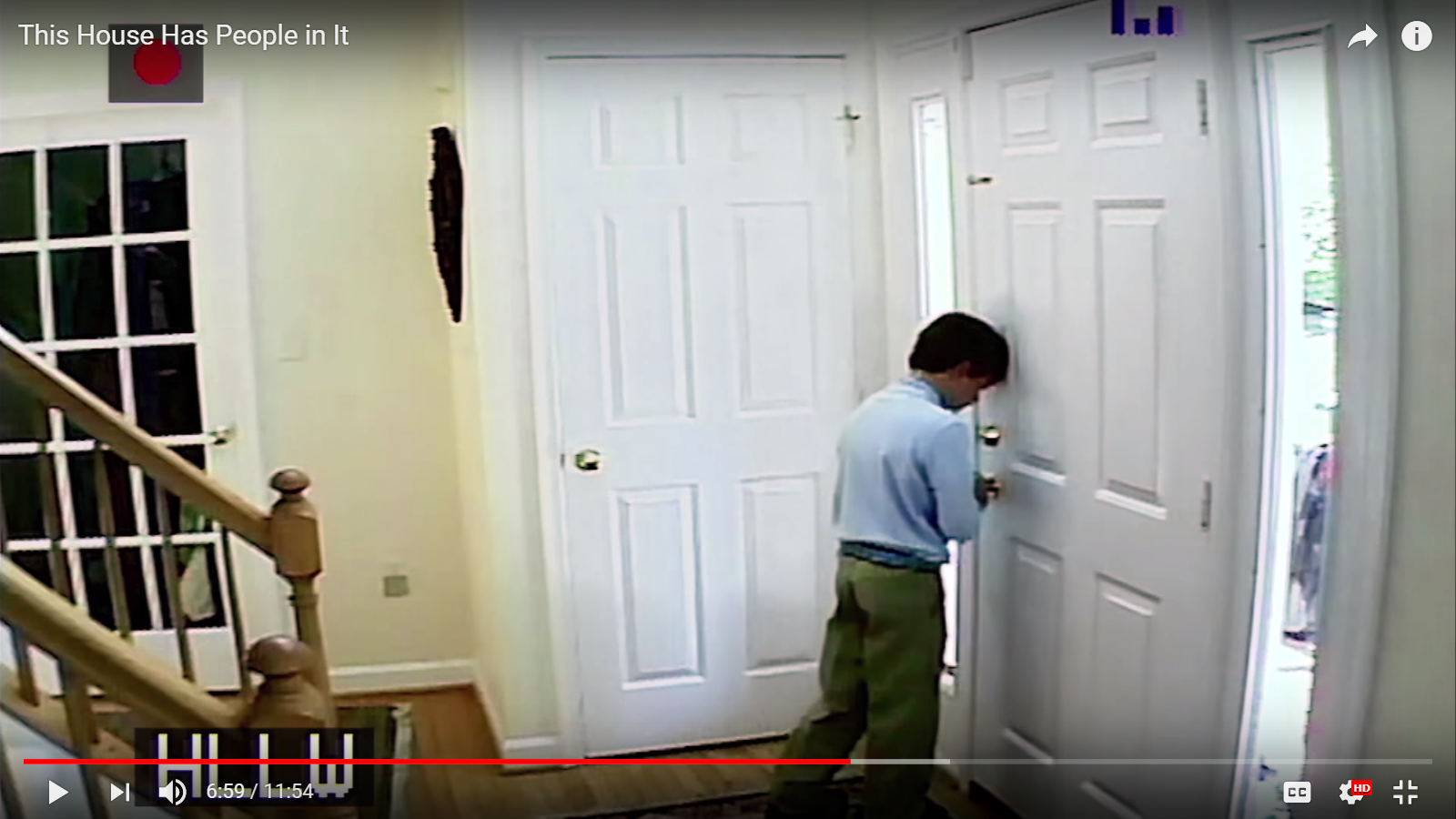
At least as far as these examples are concerned, surveillance cinema has one other distinguishing characteristic. From science class we are familiar with the concept of the observer effect, the idea that the act of observation can alter the state of the observed. Surveillance cinema subjects its characters to observation so ostentatious we feel it like a physical presence, like an entity; the observed system reacts in similarly extreme fashion, with the shattering of reality itself.
In The Curse, Asher is ejected into the sky. Similarly, in This House, Subject 3 (Rory Ogden) is sucked through the floor into the basement, where a hideous being (Cricket Arrison) can be seen in subliminal glimpses. The entity in Skinamarink severs the children from their family, the outside world, and finally spacetime itself. The Zone of Interest ends with a nauseated Rudolph Höss having an inexplicable vision of the future, as janitorial workers clean the museum into which his death camp has been turned.
I’ve seen people react to The Curse, at least, as if it’s almost indescribably bizarre to wrap up that way. As if magic realism doesn’t exist; as if you’ve never seen Being There, much less, I dunno, Inland Empire or The Outwaters or whatever weird experimental horror film you care to name. I am literally always saying this: Genre work, fantastic fiction, whatever you want to call science fiction and fantasy and horror and the liminal space within them that surveillance cinema inhabits — these things exist to give us a voice commensurate with the intensity of our feelings when the visual vocabulary of the everyday will no longer do.
I saved this point for the last for the same reason the filmmakers did, I think: to show that there is no happy ending for homes like these, in the most emphatic terms possible. Surveillance cinema captures the deterioration of these homes’ illusory safety with minimal mediation and maximum discomfort, just as it captures the uncanny and unnerving collapse of the laws of gravity or the flow of time. The homes are too dead and destructive to be sustainable, and eventually something will give, and the sky will open up to take you.
Sean T. Collins is a critic who has written for The New York Times, Rolling Stone,Vulture, Decider, Pitchfork, and others. He is the author of Pain Don’t Hurt: Meditations on Road House, published by Mutual Skies in 2021. Together, Sean and Julia Gfrörer are the co-editors of Mirror Mirror II, an anthology of horror and erotic comics and art, published by 2dcloud in 2017. They live with their children on Long Island.
